The Night the Sun Didn’t Kiss the Grid
Photographers and onlookers held their breath for a Manhattanhenge sunset that never showed
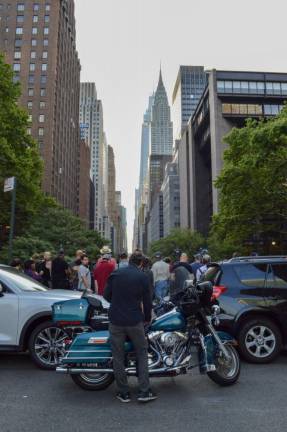
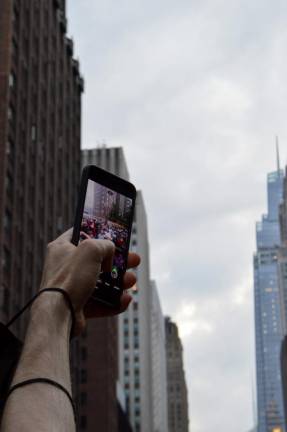
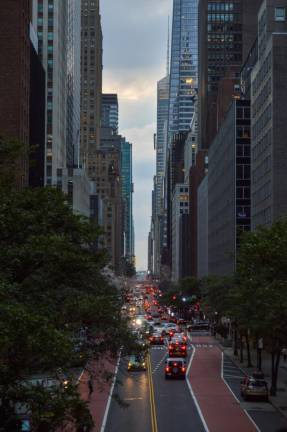
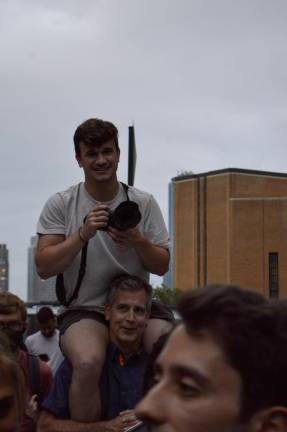
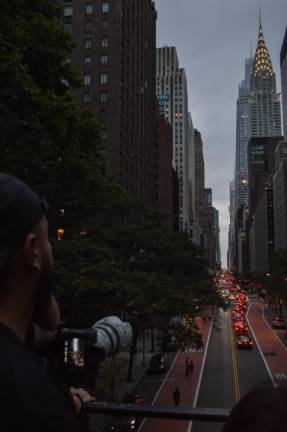
Dismal skies were, perhaps, the only element of Sunday evening not in the control of a crowd of people gathered at the Tudor City overpass on East 42nd Street; they had shown up hours before sunset, fine-tuned the settings of their cameras and waited for something that had promised to be a spectacular feat of timing and geography: Manhattanhenge.
“The sun lines itself up,” explained Dr. Jackie Faherty, an astrophysicist at the American Museum of Natural History, “gets itself all dolled up and ready for its big close up with the great big city of New York.”
But on July 11, someone in the huddle of people and large lenses announced, “my wife just texted me: ‘It doesn’t look good.’” The sun, hidden behind clouds, never showed its face.
Manhattanhenge occurs only four times each year when the setting sun “kisses the horizon,” according to Faherty, at the same moment that it aligns with the Manhattan grid, usually offering New Yorkers a glimpse of the sunset nestled perfectly between surrounding buildings if they peer west toward the Hudson River through the island’s east to west streets. To calculate its timing, Dr. Faherty compares the angle of the grid with minute-by-minute data on the sun’s exact position (altitude and azimuth) — a task she’s taken over from Neil deGrasse Tyson, who named the phenomenon himself.
A “full sun” Manhattanhenge (when the bottom edge of the sun touches the horizon as it sets in alignment with the island’s east to west streets) occurred most recently on July 11, followed by a “half sun” Manhattanhenge (when the middle point of the sun meets the horizon as it sets in alignment with the grid) on July 12.
An earlier pair of Manhattanhenge sunsets occurred in May, since sunsets are symmetrical about the summer solstice. In the time between the first and last Manhattanhenge dates, New York City became home to what Dr. Faherty calls the “Manhattanhenge effect” — a period when the sun aligns with the grid higher in the sky.
Manhattanhenge made its “pop culture” debut in 1997, when a cartoon depicting Tyson showcased the anticipated dates of the special sunsets in Natural History magazine, according to Faherty. The phenomenon, however, is as old as the Manhattan grid itself, which dates back, at its inception, to 1811. Faherty suspects that drivers in the city were likely keenly aware of the blinding sunsets before Manhattanhenge made it big-time in print; now, it’s celebrated on social media.
“A sunset picture, especially one that’s perfectly framed by the iconic buildings of New York City,” Faherty said, “with all that gorgeous, golden light that you get at a sunset, is perfectly fitting the category of Instagram perfection.”
This summer, eager photographers — some attempting to catch the “full sun” Manhattanhenge for the first time — weren’t so lucky.